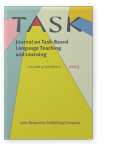Vol. 3:2 (2023) ► pp.305–335
Chinese EFL teachers’ understandings and implementation of task-based language teaching
A multiple case study
Across China, English language teaching curricula have advocated for task-based language teaching (TBLT) for more than 20 years. Yet, there is reason to believe that practice varies widely. As such, this multiple case study sheds light on two Chinese teachers’ understandings and implementation of TBLT in a public primary school in Chongqing, southwest China. Data collection consisted of eight semi-structured interviews and eight classroom observations. Data were analyzed using qualitative content analysis. The analysis indicated that the teachers had basic understandings of TBLT, but their teaching was incongruent with its principles. Few tasks were observed in their lessons. Three main factors affected the teachers’ implementation of TBLT: (1) classroom management issues; (2) preparation and teaching resources; and (3) the teachers’ own tacit reluctance.
Article outline
- Introduction
- Literature review
- The development of TBLT
- The notion of a ‘task’
- Uptake of ELT curriculum innovation in the Chinese EFL context
- Similar TBLT research in Hong Kong
- Similar TBLT research in mainland China
- Similar TBLT research in less-developed cities in China
- Methods
- Research design
- Research setting
- Participants
- Data collection
- Classroom observations
- Interviews
- Data analysis
- Findings and discussion
- RQ1: Task implementation in observed classes
- Jiadong’s classes
- Xiaoyu’s classes
- RQ2: Understandings of TBLT and tasks
- General understandings of TBLT
- Tasks should be feasible and effective
- Tasks should involve communication and problem solving
- Tasks should be authentic
- Tasks should not be limited in language form
- RQ3: Three main factors affecting TBLT implementation
- Classroom management
- Preparation and teaching resources
- Teachers’ tacit reluctance to implement TBLT
- RQ1: Task implementation in observed classes
- Concluding discussion
-
References
For any use beyond this license, please contact the publisher at [email protected].
